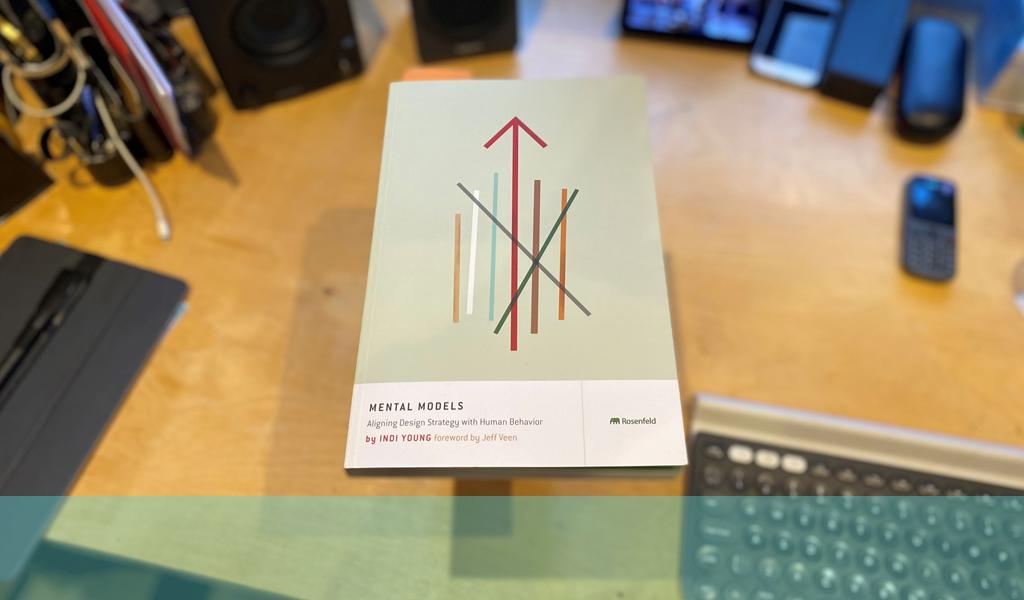
I am reading Mental Models by Indi Young. It is part of my self improvement plan for 2021 and also my colleague John Dumas, Consultancy Director at UX247, recommended it. As it happens I already owned the book and it was still wrapped in cellophane on my book shelf, untouched. I won it at a UXPA event in 2008 and had not got round to reading it – shame on me!
We are about to run a project to create mental models for one of our clients. Whilst I am not running the project, I thought it would be valuable to refresh my knowledge so I can help the client understand why we are doing certain activities and what the benefits are. I have not been disappointed.
Quick recap – what are mental models?
The term mental models has been around for a long time but Indi Young provides a distinct definition in the book. That is:
“Mental models give you a deep understanding of people’s motivations and thought-processes, along with the emotional and philosophical landscape in which they are operating.”
The word she uses leading up to this is “empathy”. And that is spot on. Mental models help us understand not just who a person is and what their goals are, but also to see the context through their eyes.
At a practical level they are ways of visualizing how a group of people approach tasks, achieve goals and behave during the process. Digitally putting yourself in their shoes for want of a better expression.
Mental Models as foundations
What struck me as I got into the book was how mental models underpin so many elements of the product development cycle. We tend to think about digital experience in terms of use cases and tasks. Mental models help us think beyond this from what they will do next to how they think about where they are and the next step.
Because they are so detailed they also last beyond the project they were created for. They are invaluable for populating personas. They also allow reference back at any stage in the development cycle to help understand why design decisions have been taken.
That is also true of discovery research in general and this is where I think they fit in to the overall service framework. In double-diamond terms we are diverging when we capture this data, broadening out how we define the user.
I am only about a third of the way through the book so have a long way to go. But I urge you to take a look and learn about how you can enhance your understanding of your customers and users.
If you would like to know more about how we can help you create mental models for your own products, ring us on +44(0)800 024624 or email us at hello@ux247.com.


